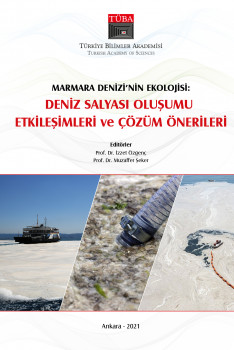The Reasons for Occurrence of Sea Snot/Mucilage in The Sea of Marmara

The Reasons for Occurrence of Sea Snot/Mucilage in The Sea of Marmara
Even though Jelly-like organisms are accepted as indicators of a degraded ecosystem they are the key elements of the pelagic system due to their significant role in filtering the microplankton and organic matter and thus balancing the higher trophic levels. Their bloom is linked generally with eutrophication, coastal embankment, and fishery activities, however, increasing spatial distribution of species and higher reproduction potential are also linked with climate change. Entering Non-indigenous species into a degraded ecosystem, coincidently, may cause severe consequences by blooms of those species. We witnessed such an event in 2007, when Liriope tetraphylla, a non-indigenous species for the Sea of Marmara, entered the system and caused serious ecosystem damage. Today, however, native species are responsible for the damage in the pelagic system. The unique factor that played a role in the bloom of native species is the extreme fisheries pressure on the small pelagic fish. Following the extreme fishery activities which were recorded in 2018, increased populations of Salpa colonies, later Rhizostoma pulmo and Aurelia aurita species and decreased phytoplankton and zooplankton abundance were observed in the Sea of Marmara. Consequently, when the species that feed on plankton are withdrawn from the system, the gap in the food web is filled with the jelly-like organisms which again feed on plankton. There is a strong relationship between the system that triggered the mucilage event and the high abundance of jelly-like organisms in the environment based on the monthly observations. During the period of November-December 2020, the sea saliva, as fishermen called, took a start and right after that a dense population of nanoplankton was recorded. The food web of the pelagic system in the Sea of Marmara thus changed, completely.
